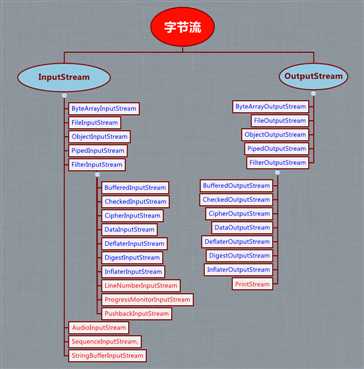标签:byte idt led 异常 tostring cto pipe lin 数据源
File类是java.io包中唯一对文件本身进行操作的类。它可以进行创建、删除文件等操作。
可以使用 createNewFille() 创建一个新文件。
可以使用 delete() 删除一个文件。
演示创建和删除文件操作
import java.io.File; import java.io.IOException; public class FileDemo01 { public static void createFile(String filepath) { File f = new File(filepath); System.out.println("[Create File] " + f.getPath().toString()); try { f.createNewFile(); // 创建文件,根据给定的路径创建 } catch (IOException e) { e.printStackTrace(); // 输出异常信息 } } public static void deleteFile(String filepath) { File f = new File(filepath); System.out.println("[Delete File] " + f.getPath().toString()); if(f.exists()){ // 如果文件存在则删除 f.delete(); // 创建文件,根据给定的路径创建 } } public static void main(String args[]) { // 注意三种分隔符方式 String path1 = "d:\\test1.txt"; // Windows中使用反斜杠表示目录的分隔符"\" String path2 = "d:/test2.txt"; // Linux中使用正斜杠表示目录的分隔符"/" String path3 = "d:" + File.separator + "test3.txt"; // 最好的做法是使用File.separator,可以根据所在操作系统选取对应分隔符 createFile(path1); createFile(path2); createFile(path3); deleteFile(path1); } };
可以使用 mkdir() 来创建文件夹,但是如果要创建的目录的父路径不存在,则无法创建成功。
public class FileDemo02 { public static void main(String args[]) { File f = new File("d:\\abc\\test"); // 实例化File类的对象 f.mkdir(); // 创建文件夹 // f.mkdirs(); // 创建文件夹,如果父路径不存在,会一并创建 } };
File中给出了两种列出文件夹内容的方法:
public class FileDemo03 { public static void testListFiles1(String path) { File f = new File(path); // 实例化File类的对象 String str[] = f.list(); // 列出给定目录中的内容 System.out.println("[list]"); for (int i = 0; i < str.length; i++) { System.out.println(str[i]); } } public static void testListFiles2(String path) { File f = new File(path); // 实例化File类的对象 File files[] = f.listFiles(); // 列出全部内容 System.out.println("[listFiles]"); for (int i = 0; i < files.length; i++) { System.out.println(files[i]); } } public static void main(String args[]) { String path = "d:" + File.separator; testListFiles1(path); testListFiles2(path); } };
可以使用 delete() 来删除目录。
import java.io.File; public class DeleteDirectory { /** * 删除空目录,如果目录不为空,无法删除 * @param dir */ private static void deleteEmptyDir(String dir) { File f = new File(dir); boolean success = f.delete(); if (success) { System.out.println("Success to deleted " + dir); } else { System.out.println("Failed to delete " + dir); } } /** * 如果传入的是一个目录对象,遍历删除其所有子文件和子目录 * @param dir * @return */ private static boolean deleteDir(File dir) { if (dir.isDirectory()) { File[] children = dir.listFiles();// 递归删除目录中的子目录下 for (int i = 0; i < children.length; i++) { boolean success = deleteDir(children[i]); if (!success) { return false; } } } // 目录此时为空,可以删除 return dir.delete(); } public static void main(String[] args) { String emptyDir = "d:\\empty"; String dir2 = "d:\\test"; deleteEmptyDir(emptyDir); boolean success = deleteDir(new File(dir2)); if (success) { System.out.println("Success to deleted " + dir2); } else { System.out.println("Failed to delete " + dir2); } } }
RandomAccessFile类是随机读取类,它是一个完全独立的类。
它适用于由大小已知的记录组成的文件,所以我们可以使用seek()将记录从一处转移到另一处,然后读取或者修改记录。
文件中记录的大小不一定都相同,只要能够确定哪些记录有多大以及它们在文件中的位置即可。
当用 rw 方式声明RandomAccessFile对象时,如果要写入的文件不存在,系统将自行创建。
为了保证可以进行随机读取,所有写入的名字都是8个字节,写入的数字都是固定的4个字节。
import java.io.File; import java.io.RandomAccessFile; public class RandomAccessFileDemo01 { // 所有的异常直接抛出,程序中不再进行处理 public static void main(String args[]) throws Exception { File f = new File("d:" + File.separator + "test.txt"); // 指定要操作的文件 RandomAccessFile rdf = null; // 声明RandomAccessFile类的对象 rdf = new RandomAccessFile(f, "rw");// 读写模式,如果文件不存在,会自动创建 String name = null; int age = 0; name = "zhangsan"; // 字符串长度为8 age = 30; // 数字的长度为4 rdf.writeBytes(name); // 将姓名写入文件之中 rdf.writeInt(age); // 将年龄写入文件之中 name = "lisi "; // 字符串长度为8 age = 31; // 数字的长度为4 rdf.writeBytes(name); // 将姓名写入文件之中 rdf.writeInt(age); // 将年龄写入文件之中 name = "wangwu "; // 字符串长度为8 age = 32; // 数字的长度为4 rdf.writeBytes(name); // 将姓名写入文件之中 rdf.writeInt(age); // 将年龄写入文件之中 rdf.close(); // 关闭 } };
读取是直接使用 r 的模式即可,以只读的方式打开文件。
import java.io.File; import java.io.RandomAccessFile; public class RandomAccessFileDemo02{ // 所有的异常直接抛出,程序中不再进行处理 public static void main(String args[]) throws Exception{ File f = new File("d:" + File.separator + "test.txt") ; // 指定要操作的文件 RandomAccessFile rdf = null ; // 声明RandomAccessFile类的对象 rdf = new RandomAccessFile(f,"r") ;// 以只读的方式打开文件 String name = null ; int age = 0 ; byte b[] = new byte[8] ; // 开辟byte数组 // 读取第二个人的信息,意味着要空出第一个人的信息 rdf.skipBytes(12) ; // 跳过第一个人的信息 for(int i=0;i<b.length;i++){ b[i] = rdf.readByte() ; // 读取一个字节 } name = new String(b) ; // 将读取出来的byte数组变为字符串 age = rdf.readInt() ; // 读取数字 System.out.println("第二个人的信息 --> 姓名:" + name + ";年龄:" + age) ; // 读取第一个人的信息 rdf.seek(0) ; // 指针回到文件的开头 for(int i=0;i<b.length;i++){ b[i] = rdf.readByte() ; // 读取一个字节 } name = new String(b) ; // 将读取出来的byte数组变为字符串 age = rdf.readInt() ; // 读取数字 System.out.println("第一个人的信息 --> 姓名:" + name + ";年龄:" + age) ; rdf.skipBytes(12) ; // 空出第二个人的信息 for(int i=0;i<b.length;i++){ b[i] = rdf.readByte() ; // 读取一个字节 } name = new String(b) ; // 将读取出来的byte数组变为字符串 age = rdf.readInt() ; // 读取数字 System.out.println("第三个人的信息 --> 姓名:" + name + ";年龄:" + age) ; rdf.close() ; // 关闭 } };
字节流有两个核心抽象类:InputStream 和 OutputStream。所有的字节流类都继承自这两个抽象类。
InputStream 负责输入,OutputStream 负责输出。
字节流主要操作byte类型数据。
以下为 JDK8 版本中字节流的族谱图:

由上图可以看出,InputStream 和 OutputStream对于数据源的操作往往是成对出现的。
InputStream的作用是用来表示哪些从不同数据源产生输入的类。
InputStream类型表
| 类 | 功能 | 构造器 |
| ByteArrayInputStream | 允许将内存的缓冲区当做InputStream使用 | 缓冲区,字节将从中取出 |
| StringBufferInputStream | 将String转换成InputStream | 字符串。底层实现实际使用StringBuffer |
| FileInputStream | 从文件中读取信息 | 字符串,表示文件名、文件或FileDescriptor对象 |
| PipedInputStream | 产生用于写入相关PipedOutputStream的数据。实现“管道化”概念 | PipedOutputStream |
| SequenceInputStream | 将多个InputStream对象合并为一个InputStream | 两个InputStream对象或一个容纳InputStream对象的容器Enumeration |
| FilterInputStream | 抽象类,作为“装饰器”的接口。其中“装饰器”为其他InputStream类提供有用功能 |
参考
https://www.cnblogs.com/jingmoxukong/p/4513059.html
https://www.cnblogs.com/jingmoxukong/p/4513964.html
标签:byte idt led 异常 tostring cto pipe lin 数据源
原文地址:https://www.cnblogs.com/myitnews/p/12944591.html